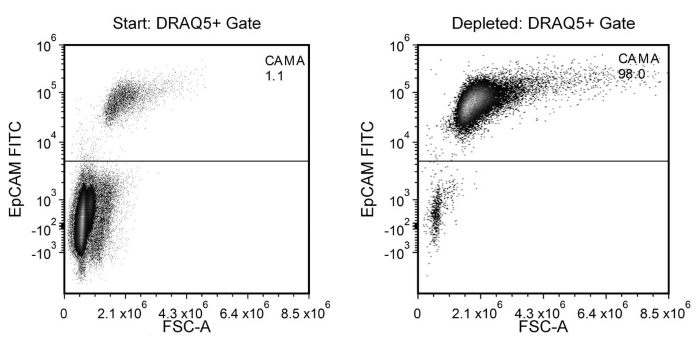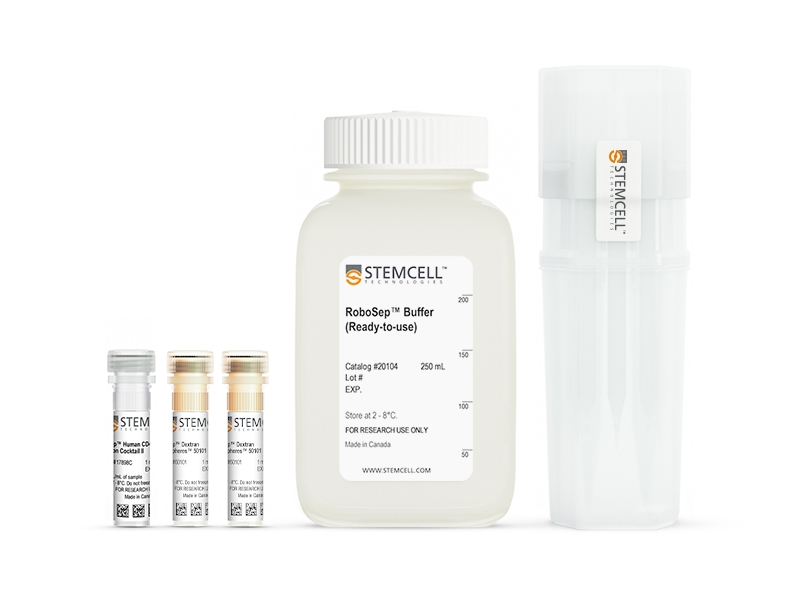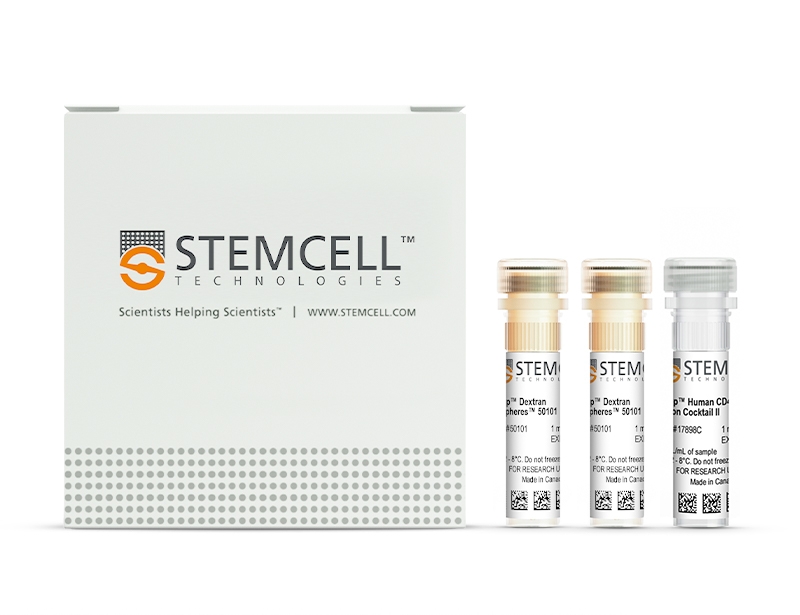概要
The EasySep™ Human CD45 Depletion Kit II is designed to deplete CD45+ cells from fresh or previously frozen human peripheral blood mononuclear cells. Unwanted cells are targeted with antibody complexes recognizing CD45 and magnetic particles. Labeled cells are separated using an EasySep™ magnet without the use of columns. Unwanted cells remain in the tube while desired cells are poured off. The CD45 antigen is expressed on all hematopoietic cells except erythrocytes and platelets.
This product replaces the EasySep™ Human CD45 Depletion Kit (Catalog #18259) for even faster cell isolations.
This product replaces the EasySep™ Human CD45 Depletion Kit (Catalog #18259) for even faster cell isolations.
技术资料
| Document Type | 产品名称 | Catalog # | Lot # | 语言 |
|---|---|---|---|---|
| Product Information Sheet | EasySep™ Human CD45 Depletion Kit II | 17898 | All | English |
| Product Information Sheet | RoboSep™ Human CD45 Depletion Kit II | 17898RF | All | English |
| Safety Data Sheet 1 | EasySep™ Human CD45 Depletion Kit II | 17898 | All | English |
| Safety Data Sheet 2 | EasySep™ Human CD45 Depletion Kit II | 17898 | All | English |
| Safety Data Sheet 1 | RoboSep™ Human CD45 Depletion Kit II | 17898RF | All | English |
| Safety Data Sheet 2 | RoboSep™ Human CD45 Depletion Kit II | 17898RF | All | English |
数据及文献
Data

In the example above, CAMA cells were seeded into PBMCs at a starting frequency of 1.1% (98.9% CD45+; gated on DRAQ5™ for nucleated cells). The CAMA cell (EpCAM+) content of the depleted fraction is 98%, which is a 4.0 log depletion of CD45+ cells.
NOTE: EpCAM is an antibody against an epithelial cell surface antigen expressed on CAMA cells.
Publications (2)
Blood advances 2020 oct
Acute myeloid leukemia-induced remodeling of the human bone marrow niche predicts clinical outcome.
Abstract
Abstract
Murine models of myeloid neoplasia show how leukemia infiltration alters the hematopoietic stem cell (HSC) niche to reinforce malignancy at the expense of healthy hematopoiesis. However, little is known about the bone marrow architecture in humans and its impact on clinical outcome. Here, we dissect the bone marrow niche in patients with acute myeloid leukemia (AML) at first diagnosis. We combined immunohistochemical stainings with global gene expression analyses from these AML patients and correlated them with clinical features. Mesenchymal stem and progenitor cells (MSPCs) lost quiescence and significantly expanded in the bone marrow of AML patients. Strikingly, their HSC- and niche-regulating capacities were impaired with significant inhibition of osteogenesis and bone formation in a cell contact-dependent manner through inhibition of cytoplasmic $\beta$-catenin. Assessment of bone metabolism by quantifying peripheral blood osteocalcin levels revealed 30{\%} lower expression in AML patients at first diagnosis than in non-leukemic donors. Furthermore, patients with osteocalcin levels ≤11 ng/mL showed inferior overall survival with a 1-year survival rate of 38.7{\%} whereas patients with higher osteocalcin levels reached a survival rate of 66.8{\%}. These novel insights into the human AML bone marrow microenvironment help translate findings from preclinical models and detect new targets which might pave the way for niche-targeted therapies in AML patients.
Nature biomedical engineering 2020 jul
Classification of T-cell activation via autofluorescence lifetime imaging.
Abstract
Abstract
The function of a T cell depends on its subtype and activation state. Here, we show that imaging of the autofluorescence lifetime signals of quiescent and activated T cells can be used to classify the cells. T cells isolated from human peripheral blood and activated in culture using tetrameric antibodies against the surface ligands CD2, CD3 and CD28 showed specific activation-state-dependent patterns of autofluorescence lifetime. Logistic regression models and random forest models classified T cells according to activation state with 97-99{\%} accuracy, and according to activation state (quiescent or activated) and subtype (CD3+CD8+ or CD3+CD4+) with 97{\%} accuracy. Autofluorescence lifetime imaging can be used to non-destructively determine T-cell function.

 网站首页
网站首页




